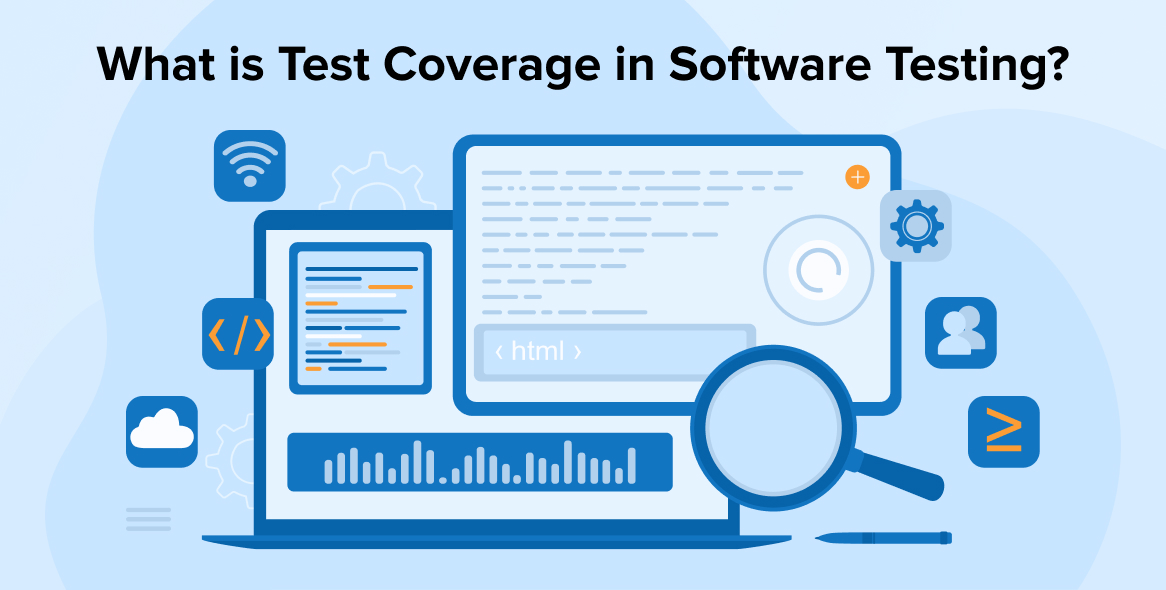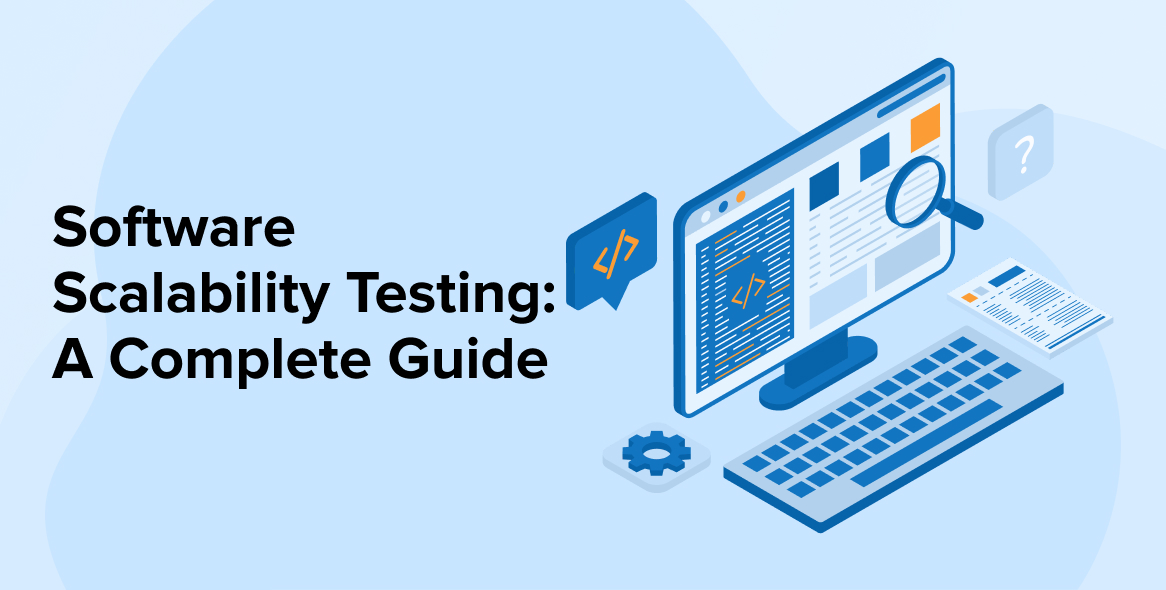
In today’s time, every organization needs a business application but keeping those solutions secured for the end-users is essential. To prevent any security issues, testing is necessary. For this, software testing service providers prefer static testing. This type of testing is conducted in the early stages of the software development lifecycle. This type of testing helps to prevent errors from occurring because it is easier to identify the problem’s source and rectify it. In this blog, we will learn more about static testing, its techniques, tools, pros & cons, along with some helpful tips that can help testers to understand and apply this concept effectively.
1. What is Static Testing?
Static testing is used by the testers to identify defects in software solutions without executing the code. Static testing is performed to avoid errors at an early stage of the software development life cycle. It can be performed manually or automated using different software testing tools. Software testing services providers use this method to detect errors that cannot be found dynamically. This helps save all the troubles behind solving any bug at the later stage of the software development process.
For more understanding, Let’s see what Prajwal Dcunha says about Static Testing on Quora.

1.1 Features of Static Testing
To gain a better understanding of static testing and how to execute it, one must be familiar with its key features.
- Standards and Requirements Review: As part of this process, you must examine both the practical and theoretical needs. The possibility of satisfying the stated requirements should also be examined.
- Structural Design Analysis: You must check the system’s static structure and flow diagrams to make sure they fulfill all of the system’s criteria.
- Code Assessment: To do this, the source code must be examined and analyzed manually to ensure accuracy and compatibility with standards and norms.
- Analyzing Databases: It is important to verify the database objects for consistency and alignment with the database architecture, and that we look for any errors.
- Documentation Review: You must check the paperwork for clarity and accuracy.
- User Manual Review: If you want users to have no trouble using the system, it’s necessary to check the user manual.
1.2 Objectives of Static Testing
Let’s examine some of the primary objectives for conducting this type of software testing now that you understand what static testing is. Here are the primary objectives:
- To enhance the efficiency of development.
- To identify, anticipate, and resolve any problems that may arise.
- To reduce the occurrence of flaws or imperfections in the program or application.
- To optimize efficiency, save time, and save costs by promptly detecting errors as early as feasible.
- To detect flaws in the first phase of the software development life cycle that can be quickly corrected.
1.3 Static Testing Advantages
Static Testing offers several advantages to software development operations. These are some of the main advantages:
- Early identification of defects: Static testing helps identify errors, flaws, and bugs throughout the development phase when they are most economically viable and easier to rectify.
- Mitigation of frequent issues: Static Testing is a method that helps prevent common problems including syntax errors, null pointer exceptions, and resource leaks. By taking proactive measures to solve these difficulties throughout the development phase, teams can prevent such problems from arising in the future.
- Enhanced code quality: Static Testing process that verifies that code is properly organized, simple to maintain, and adheres to widely accepted coding standards in the industry. As a result, this enhances the overall quality of the code and minimizes the likelihood of errors and flaws in the final output.
- Decreased expenses and time consumption: Early detection of errors minimizes expenses and the time required for their correction. This has the potential to save significant resources during the whole development process.
- Improved collaboration: Static testing helps in identifying issues in a cooperative setting, encouraging the exchange of information and enhancing communication among team members.
1.4 Why Should We Perform Static Testing?
Some of the basic and most important reasons behind performing static testing are:
- Static testing helps in improving software development productivity.
- It enables the testers to find and address bugs, structural defects, and errors early on.
- With static testing, the cost and the timeline for dynamic testing can be reduced at the later stage of the development process.
- It helps in reducing the number of defects that might be found later in the process.
1.5 How Static Testing is Performed?
Below are the various ways of performing Static testing:
- Use Case Requirements Validation: It enables accurate tracking of all user behaviors, including any associated input and output. The static testing process can become more accurate and thorough when there are large and comprehensive use cases.
- Functional Requirements Validation: This approach ensures that all crucial elements are included in the functional requirements. Additionally, it examines the functioning of the database, hardware, software, and network requirements, along with interface specifications.
- Architecture Review: Business-level processes involve several aspects such as server locations, network designs, protocol specifications, load balancing, database accessibility, and test equipment.
- Prototype/Screen Mockup Validation: This phase involves verifying the specifications and use cases.
- Field Dictionary Validation: Each element in the user interface is properly defined to enable the development of test cases that validate the fields at a detailed level. The fields are validated for minimum and maximum lengths, list values, error messages, and other criteria.
1.6 What Should We Test During Static Testing?
While carrying out static testing, the testers would prefer to test some specific areas and they are:
- Business requirement documents
- Test data
- Unit test cases
- Functional or system requirements
- Prototypes
- Test plan strategies
- DB fields dictionary spreadsheets
- Performance test scripts/automation
- Traceability matrix documents
2. Static Testing Techniques

When it comes to performing static testing on any software solution, there are two main types of static testing, and they are:
- Review process
- Static Analysis
2.1 Review Process

The main aim of the static testing review process is to remove errors from the software design. This process comes with documents like the software specification document to identify, check, and solve the errors and ambiguities. The review process of static testing is further divided into four steps:
2.1.1 Informal Reviews
Informal review in static testing is done to improve the quality of software. The software requirement specification document is shared with industry experts and reviews are collected from them. Based on valuable inputs provided by them, modifications will be made accordingly.
2.1.2. Walkthrough
The next stage is the walkthrough review process which is carried out by an expert on the specific subject. In this stage, the expert is responsible for reviewing the documents to confirm the software feature’s feasibility and ensure that there are no issues with the functions of the system during development.
2.1.3 Peer Review
After the walkthrough review, the peer-review process follows. During this stage, the internal software development team members perform peer reviews. All the technical specifications and requirements are reviewed in this process. This review ensures that every team member reviews the software documents properly and finds issues.
2.1.4 Inspection
The last process in the review analysis phase is inspection. During this stage, the supporting documents like software requirements specifications (SRS) are carefully reviewed to ensure that all the specifications are listed properly.
2.2 Static Analysis

Static analysis is a type of static testing approach that assesses the code written by programmers. This process ensures that the code of the system meets the required standard. The static analysis team reviews the code for general best practices. In this process, there the three different phases to identify issues in the code and they are:
2.2.1 Data Flow
Data flow analysis is a process that looks at how data or information comes into the system. It checks the interactions of the system and its data experiences. Here the experts also check how the data exits the system.
2.2.2. Control Flow
Another method to check the code is to evaluate the order of code execution statements. This process helps in knowing whether the code meets the intended behavior or not.
2.2.3 Cyclomatic Complexity
The last type of code analysis method in static testing is cyclomatic complexity. It helps in measuring the complexity of the program. This process is related to the number of independent paths in the software’s control flow graph.
3. Tools Used for Static Testing
Some of the most popular static analysis tools are:
3.1 Checkstyle

Checkstyle is a popular static analysis tool used to maintain the quality of Java code. It helps check out every type of coding standard that is available in Java.
Some of the features of Checkstyle are:
- Identify the program methods and classes that are used to design the software.
- Verifying formatting issues and code layout.
- Checking different features of the code.
Source Github Checkstyle: Checks Java source code and other text files for adherence to a set of rules.
3.2 SourceMeter

SourceMeter, an advanced static code analysis tool supports various languages like C, C++, Python, Java, and RPG projects. It is a tool that helps the testers to identify issues in the code.
Some of the features of SourceMeter are:
- Deep static code analysis.
- Precise coding errors detection.
- Platform-independent tools.
3.3 ESLint

ESLint is one of the best static testing tools that every tester uses to detect and fix problems in JS code. This tool enables the testing team to define custom style guides that suit their own test cases.
Some of the major features of ESLint are:
- Automatic error fixing.
- Statically parse code to detect issues.
- Custom rules can be made.
4. Static Testing Example
Consider a situation where your development team works hard to improve the login procedure for a mobile app. Their primary objective is to improve the user interface, strengthen security vulnerabilities, and guarantee a seamless user experience. During their efforts, they accidentally overlooked an important aspect which is, the addition of a password recovery feature for users who could lose their login credentials. By doing a comprehensive examination of the design requirements of the feature, a tester can identify this possible mistake. By employing testing approaches during the documentation review step, the tester can identify the error well in advance before the feature progresses to the execution stage.
Identifying this problem through static testing enables the team to address it promptly, therefore preventing users from encountering a situation where they are unable to change their passwords. Essentially, it functions as a proactive alert system, guaranteeing the addition of important features such as password reset, hence enhancing the app’s user experience.
5. Conclusion
As seen in this blog, static testing is a very popular approach to checking the quality of the software and detecting any type of bugs in the source code. It is very helpful in finding issues at an early stage of the software development life cycle. It is not a substitute for a dynamic testing technique but helps in finding various types of bugs with ease. In this technique, the static testing reviews are very effective and they not only help in finding defects but also enable the developers to understand missing requirements, non-maintainable code, and design defects. This is why testers prefer static testing for checking the code thoroughly.
FAQ
What is Static Testing in Agile?
Ans: Static testing is performed for each stage of agile development. It involves testing requirement papers, plans, source code, instruction manuals, and test cases.
What is Tested in Static Testing?
Ans: It analyses the need for documentation outlining requirements, design, source code, user instructions, and test scenarios.






Great post on static testing! It is an important factor in software development and enables developers to find bugs and weaknesses in the code without running it. it will help reach more substantial quality standards while offering their clients with superior software.
Static testing is a valuable technique for finding bug & defects in software at an initial stage of the software development process. The given examples are really helpful in comprehending how static testing can raise a product's overall quality. Thank you for sharing this valuable article.
Static testing is a type of software testing that is performed without running the code. It is a method of checking for bugs and defects during the software testing lifecycle. It can be performed on software objects, code, requirement documents, and so on. By identifying bugs at an early stage, static testing helps to improve the overall software quality. Thank you for sharing more information about this topic in your article.